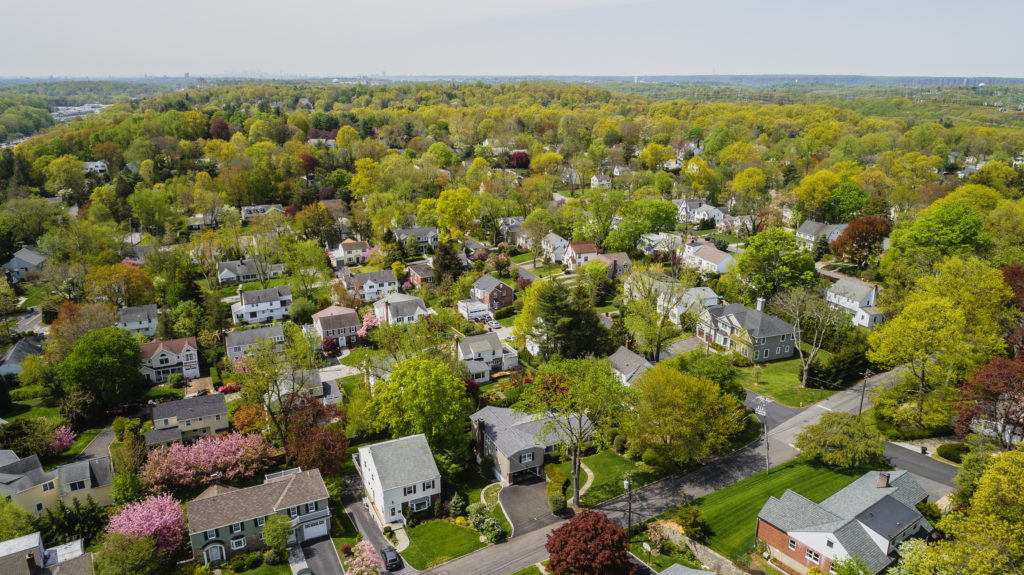There are some things about a neighborhood that you won’t discover until you move in, but you can check out many aspects ahead of time, saving you from headaches and frustration down the road. Beyond obvious signs like dilapidated buildings and trash-strewn sidewalks, here are ten things to watch for if you’re in the market for a new home.

Buying a Home Watch for these Neighborhood Red Flags
- How many houses in the area are on the market? There’s nothing wrong with a couple of houses for sale on the same street. But if you see a barrage of “For Sale” signs, it’s worth doing some extra homework to find out why people are selling. Maybe the neighborhood is occupied by older residents who’ve decided to downsize. Or maybe something more ominous, like increasing crime, is driving people to move. Carefully assess the situation before making any decisions.
- Check out the local businesses. Are there pawnshops, bars and tattoo parlors on every corner? If so, that could be a warning sign. These types of businesses aren’t inherently bad, but they tend to be located in less desirable locales. One or two of these businesses in the area isn’t cause for concern, but if they’re the rule rather than exception, it’s worth noting as possible shortcoming.
- Pay attention to class sizes. Schools in robust communities typically have a steady or increasing enrollment. Shrinking class sizes can be a red flag when buying a home, so it’s worth looking into the reasons for a decreasing enrollment. The local public schools may have a less-than-stellar reputation, so parents are sending their kids to private or charter institutions. Or, the neighborhood may be graying and filled with empty nesters. What you learn may or may not be a deal breaker but it’s worth delving deeper before you sign on the dotted line.
- Who’s outside? Are there kids out playing outdoors? Do you see people on their porches or walking about the neighborhood? If women, children and the elderly aren’t around, that’s a good sign that people don’t feel safe in the neighborhood, particularly at night. Visit the area at various times of the day to get a feel for how comfortable people are in the environment.
- How’s the public maintenance? Take note if there are trees and flowers planted along the roads or public walkways and if so, how well they are maintained. Look for things like trash that’s rarely removed, burned out street lights, and sidewalks that are overgrown with weeds or are in poor shape. If there’s snow on the ground, observe how quickly it’s removed from the streets and sidewalks.
- Watch for empty storefronts. Are the stores in the neighborhood thriving or are there lots of retail spaces for rent? Empty storefronts point to less disposable income of residents than there once was, indicating a neighborhood on the decline. If homeowners don’t have money to dine out, they probably don’t have enough for proper home upkeep.
- Check out the availability of public transportation. Non-existent service from public transportation may be an indicator of plummeting property values. Whether they’re decreasing the frequency or time of the service, it’s often because they can’t rationalize the expense of going to that neighborhood.
- Stop by the park. The appearance of the local recreation area can tell you a lot about the condition of the neighborhood. In areas where the infrastructure is strong, and where residents are involved, it’s reflected in the condition of the park. Beware of unkempt grounds, overflowing waste receptacles, and abandoned ball fields.
- Consider the accessibility to goods and services. Can you easily make a quick run to the bank or grocery store, or will every day be a headache behind the wheel due to traffic congestion, construction, or long drive times?
- Beware of a constant police presence. Police officers respond to crimes, so a lot of police activity in the neighborhood you’re considering might be red flag. Seeing police cars pass through your block every now and then isn’t cause for alarm; patrolling communities is part of their job. But if you see police responding to calls multiple times a day, it might be wise to look elsewhere. It’s also a good idea to check the crime statistics for any potential neighborhood you’re considering. Visit sites like MyLocalCrime.com and CrimeReports.com for more information.
You can’t change the location of your home once you buy it, so be careful where you choose to live.
If you’re considering a new home and have questions about neighborhood red flags, our team of courteous professionals is here to help. Please contact us today.
About Certified Title Corporation: Since 1994, attorney-owned Certified Title Corporation has been furnishing residential and commercial real estate stakeholders across the nation with robust title insurance, settlement, and escrow services. Renowned for their industry-leading reliability and exemplary level of service and quality, the Maryland-based company helps clients from all walks of life achieve their asset goals. To learn more, call (888)486-5511 or visit https://www.certifiedtitlecorp.com/.

